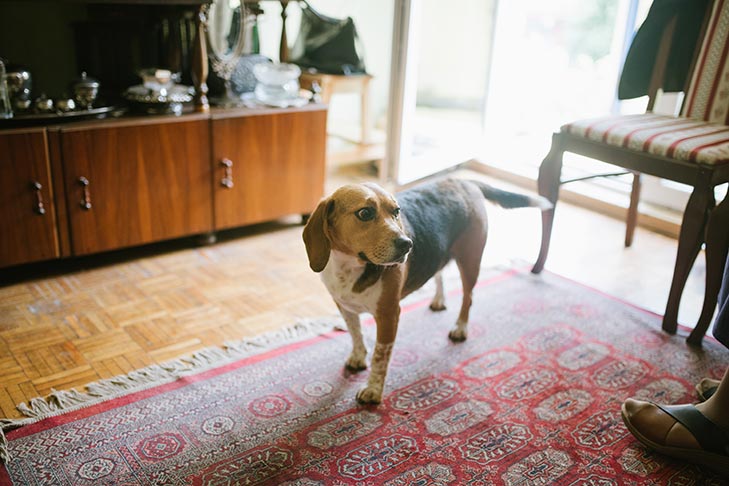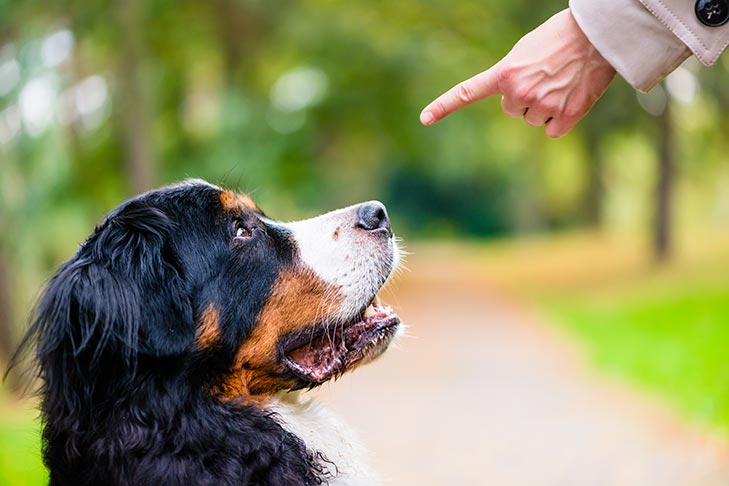At first glance, dogs seem to have it made. Favorite canine activities include frequent naps, nature walks and staying blissfully ignorant about the financial burdens of existence. All in all, dogdom looks pretty chill to us, humans. The reality is quite different. Dogs may not worry about putting food on the table or holding down a job, but there are many things we do as owners that stress them out.
Inconsistency
Inconsistent behavior is one of the most common things owners do that stress out their dogs. Canine companions appreciate schedules and rules. They like to know when things are going to happen and how they are supposed to behave. Their internal clocks let them know when it is time to wake up and go to sleep, when they are fed, and when they should expect a daily walk. When these schedules shift, the change can cause stress. The best thing you can do for your dog is to establish a schedule and stick to it, as best you can.
Inconsistency in training also throws off your dog’s sense of stability. If you allow your dog to do a certain activity — such as jumping — sometimes but not always, this will confuse him. Establishing a firm set of acceptable behaviors and consistent commands with your entire family can help prevent inconsistency in training and can also curb certain behavioral problems. For example, a dog that is allowed to pull on the leash every few walks is not going to understand that he is supposed to walk on a loose leash by your side the rest of the time.
Confusing Commands
Inconsistency in commands is so common, it deserves its own mention. We often forget that dogs don’t understand human language the way we do. While it might make perfect sense to us to use the words “drop it” and “give that here” interchangeably, mixing up your commands confuses and stresses out your dog.
Choose simple commands and stick with them. This also means not using the same words in different commands. For example, telling a dog to “get down” when he jumps or climbs on furniture can be confusing, since “down” also means lie down.
Staring
It is hard not to stare lovingly at your dog. However, too much eye contact actually makes canines uncomfortable. In dog body language, staring directly at another dog is often a sign of aggression. Staring can trigger aggressive behavior between people and dogs, too, especially in dogs with preexisting behavioral problems.
Instead of staring, turn your body slightly to one side and avoid direct eye contact. This will set a dog at ease and may encourage him to initiate physical contact.
Unnecessary Punishment
Dogs sometimes do things that annoy us. Rolling in something smelly or stealing food off the counter are understandably frustrating behaviors, but these are perfectly natural dog instincts. Yelling at a dog for acting on them without presenting an alternative behavior can cause further problems.
The best thing you can do to avoid these situations is to remove temptation. Leaving high-value food items, like meat, within your dog’s reach is testing the limits of even the most angelic canine. Next time your dog attempts to act on a doggish instinct, like eating something unsavory, discourage the behavior and then immediately offer an alternative positive behavior for your dog to perform, like chewing on a toy or playing fetch.
Telling Your Dog “It’s Okay”
Telling your dog everything will be okay seems like the right thing to do in a stressful situation. After all, that is what we want to hear when we’re scared. Dogs, however, form associations with words and phrases that precede stressful situations. If you tell your dog “it’s okay” when you are in the veterinarian’s office or in the middle of a thunderstorm, he will eventually associate the phrase “it’s okay” with a big, bad, terrible thing that is most definitely not okay.
Avoid using similar phrases when your dog is stressed or fearful. Instead, distract your dog with a game or treats to put him in a better mood, or work with a behaviorist to overcome his fear of an object, person, or situation. A fear of strange noises or sounds is often due to improper socialization, so it’s important to teach your dog to be comfortable in as many situations as possible when he’s a puppy.
Ultimately, every canine companion is different. Learning dog body language will help you figure out the things you do that stress out your pup and allow you to change that behavior. Your dog will thank you.


Recent Pet Posts
Blog Categories
Product categories
- Accessories (7)
- Chicken & Veggie Wraps (8)
- Grillers Jerky Tenders (4)
- Jerky Treats (10)
- Made in the USA (9)
- Non-Rawhide Treats (28)
- Beggar Bone (11)
- Bully Sticks (4)
- Butcher Bone (4)
- Cod Skin Fish Treats (3)
- Pork Skin Twists (2)
- Pressed Rawhide Bones & Rolls (16)
- Bones & Rolls (6)
- Pressed Rawhide Bulk (6)
- Twist Sticks (4)
- Savory Munchies (13)
- Supreme Bones & Rolls (48)
- American Rawhide Bulk (16)
- Rawhide Bones (14)
- Rawhide Chips (6)
- Rawhide Rolls & Sticks (12)
- Uncategorized (8)



